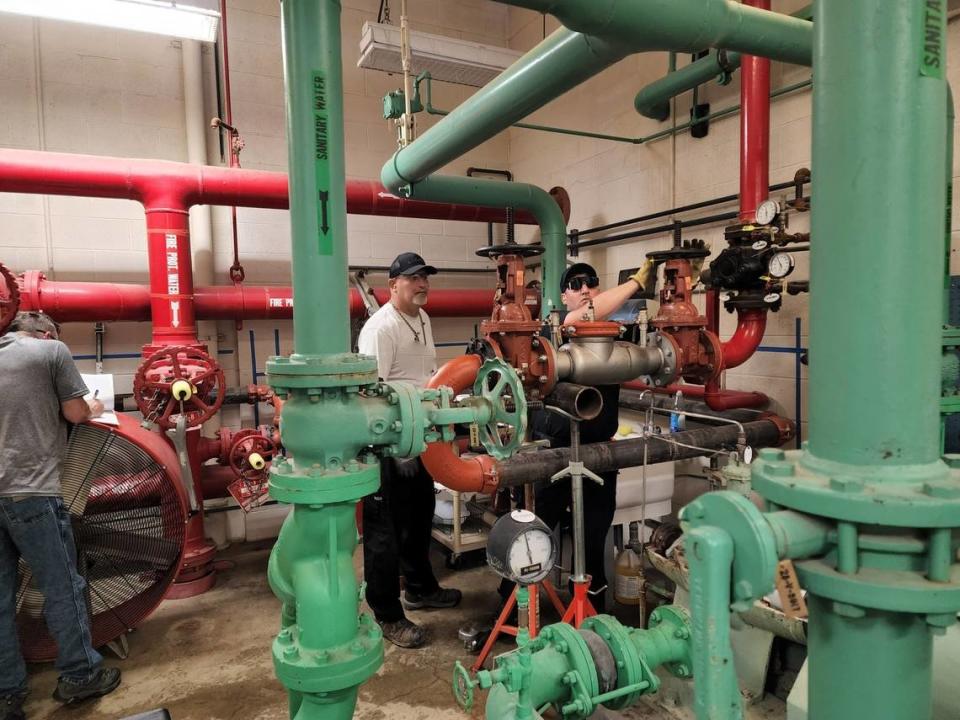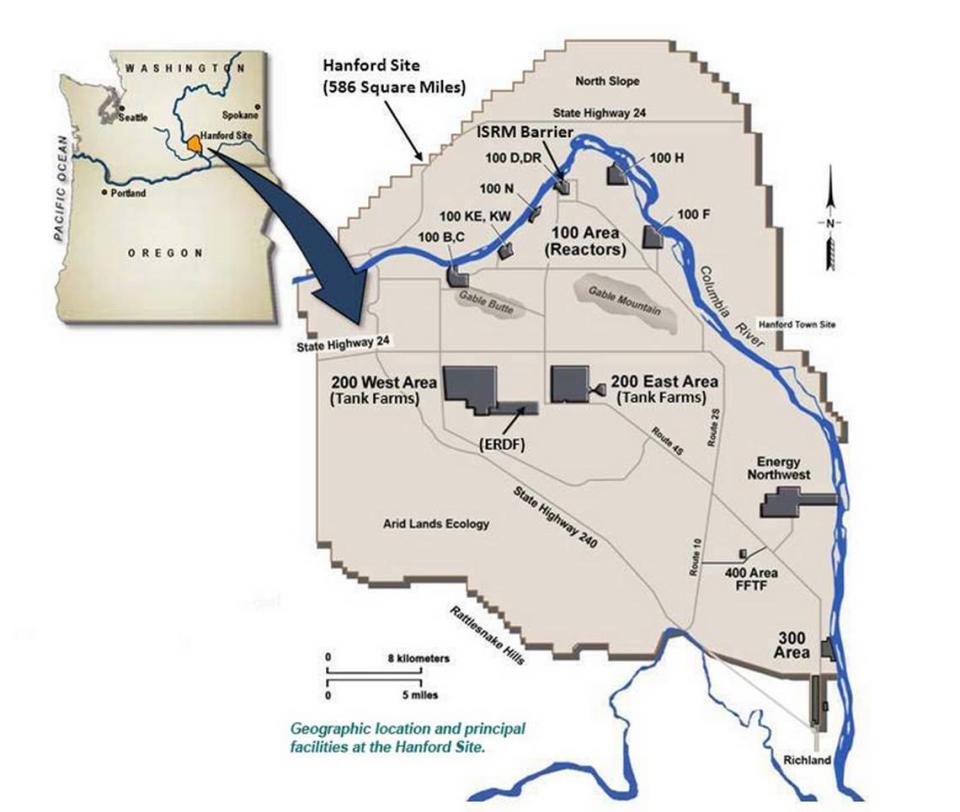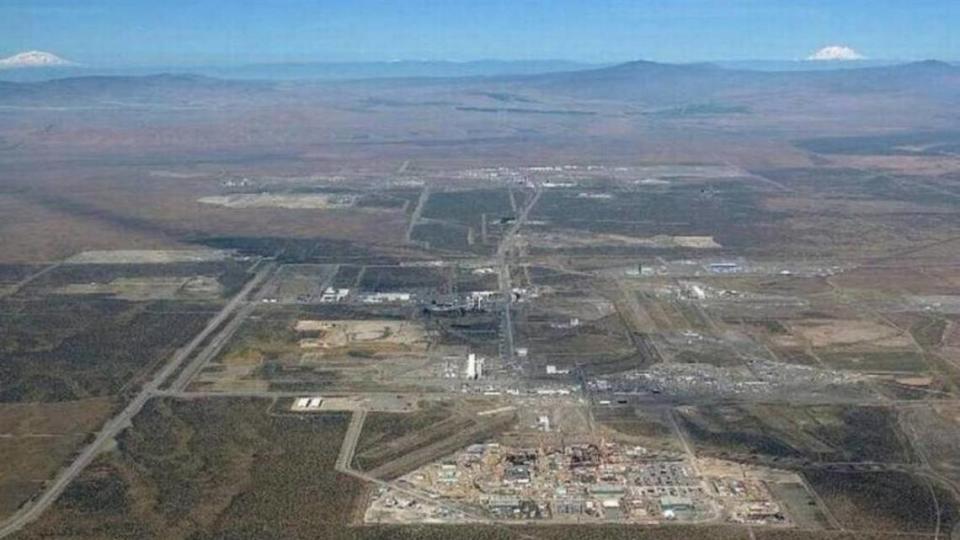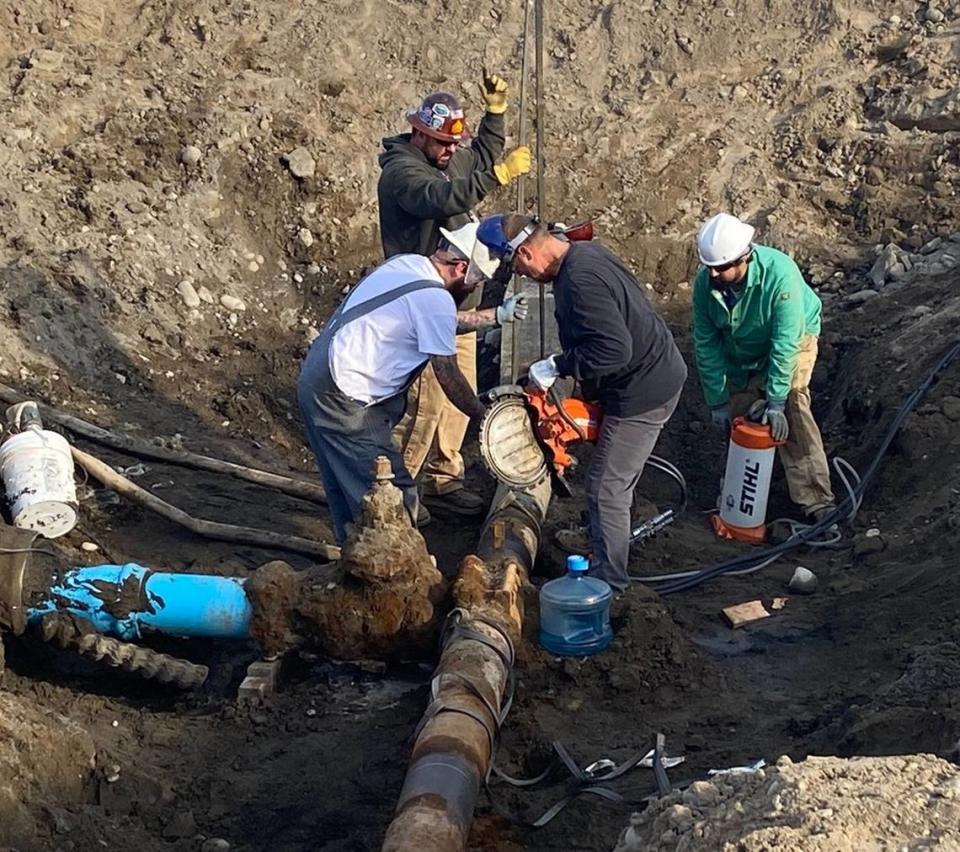Hanford site workers napped, watched movies. Taxpayers got the bill, claim prosecutors
The U.S. Department of Justice filed a civil lawsuit complaint Wednesday against a main Hanford nuclear site contractor, accusing it of systematically and fraudulently overbilling taxpayers millions of dollars.
Hanford Mission Integration Solutions (HMIS) is reimbursed with federal money for its labor and other costs of providing services, including fire protection, under a Department of Energy support services contract.
The civil lawsuit alleges that HMIS fraudulently billed DOE for worker hours, sometimes entire days, when employees were assigned no work.
Instead they spent some days at Hanford taking naps, reading and watching movies and TV shows, according to the lawsuit.
Supervisors and managers would tell workers to charge their idle time to the most recent project they had worked on, according to the U.S. Attorney’s Office for the Eastern District of Washington.
For instance, if they had done two hours of preventive maintenance that day, such as servicing two fire hydrants, they would be told to charge the entire day for that work, according to the lawsuit.
Other times they were told to mark down the idle hours as “training,” according to the lawsuit.
“Due to HMIS management’s failure to plan, schedule and carry out work effectively, the idle time experienced by hourly employees was significant and pervasive,” the legal complaint said. “Often, hourly employees worked only a fraction of their full shifts, and were idle for several hours every day, frequently a majority of the day.”
Then after their 40-hour work weeks ended — typically four 10 hour days from Monday through Thursday — they might then be assigned overtime work on Friday and the weekend, with DOE billed for their hours at a premium rate, according to the Department of Justice.
Those shifts also might have hours of down time that DOE would be billed for, according to the Department of Justice

The extensive idle time was caused not by a lack of important fire protection work and preventative maintenance at the Hanford site, but rather by HMIS’ failure to adequately plan, schedule and carry out the work, according to the lawsuit.
HMIS knew that it could simply pass the costs of its failure onto DOE and the public, the lawsuit alleges.
“HMIS not only fraudulently charged DOE for tens of thousands of hours of unworked time, but just as critically, did not perform vital fire protection work that could have and should have further protected Hanford site workers, the public and the environment from fire hazards,” according to the lawsuit.
Fraud case filed by Hanford worker
HMIS said in a statement Wednesday night that is is cooperating with the Department of Justice, the DOE Office of Inspector General and DOE.
“We are committed to resolution and identifying opportunities for continuous enhancements to increase our effectiveness as a DOE contractor,” it said. “HMIS is committed to maintaining the highest standards of ethics and integrity in everything we do.”
The 580-square-mile Hanford nuclear site near Richland in Eastern Washington was used to produce nearly two-thirds of the plutonium for the nation’s nuclear defense program from World War II through the Cold War.

The work left extensive radioactive and hazardous chemical contamination, including 56 million gallons of radioactive waste held in underground tanks, waste burial sites, and contaminated soil and groundwater.
The site has 427 facilities with operating fire protection systems that require inspections, testing and maintenance and more than 8,000 fire extinguishers.
The complaint relies on the U.S. False Claims Act, which allows whistleblowers who report federal government fraud to receive a share of funds recovered.
The legal complaint initially was filed in December 2021 by Bradley Keever, a sprinkler fitter in the fire protection group at HMIS, who could receive 15% to 25% of any funds recovered.
The case was sealed until U.S. Judge Stanley Bastian made files publicly available a few days ago.
Keever said in his original filing that required maintenance work was not done.
In one example, he said that when pin holes and pipe corrosion were found in the fire suppression systems of the Central Waste Complex buildings, “no timely internal pipe inspection, flushing or other required maintenance actions were undertaken.”

The Central Waste Complex stores 11,000 containers holding waste contaminated with radioactive material and sometimes also hazardous chemicals.
“DOE was routinely misinformed about the completeness and status of fire system inspections, testing and maintenance throughout much of the Hanford complex,” according to the complaint filed by Keever.
Maintenance work also was done by uncertified and inadequately trained workers, according to Keever’s complaint.
Sometimes workers would request tasks, knowing that there were many fire systems that needed to be inspected and maintained, but then would be assigned tasks such as working on lawn sprinklers or ice makers, according to the complaint.
Keever, who has worked at Hanford since 2009, also implicated the previous Hanford support services contractor Mission Support Alliance in the alleged fraud.
DOE said HMIS workers idle
But the Department of Justice complaint names only HMIS, which began work at Hanford in August 2020 during a 120-day transition to become the new sitewide services contractor.
Keever is represented by attorneys at Smith & Lowney, Mehri and Skalet, and Hanford Challenge.
“One of the more frustrating aspects of this case is that there is a highly trained workforce ready and willing to do this maintenance, but management is getting in the way of letting them do this essential work,” said Nikolas Peterson, executive director of Hanford Challenge.
HMIS makes profit on its contract through incentive pay, or “fee,” based on meeting specific goals and an annual subjective review by DOE of its performance.

For the fiscal 2023 fee announced this month DOE awarded HMIS only $2.9 million of a possible $8.4 million in incentive pay based on its subjective evaluation.
DOE said in a scorecard made public last week that it was unhappy with the contractor’s management of fire system maintenance workers, work activities and associated costs.
“During the performance period, DOE was provided with evidence of numerous occasions when crews assigned to perform fire system maintenance were excessively idle and participated in non-work-related activities,” said DOE in a one-page award fee determination scorecard made public.
DOE blamed “ineffective work planning and unproductive work execution that went uncorrected by contractor management.”
“We disagree with the DOE position,” said HMIS President Bob Wilkinson in a message to employees.
HMIS pay for meeting both objective goals outlined in its performance plan and the subjective evaluation for fiscal 2023 totaled $15 million of almost $21 million available in incentive pay for the year.
DOE valued the HMIS contract at $4 billion over a decade when it was awarded.
Hanford Challenge said that the U.S. Defense Nuclear Facilities Safety Board has also recently looked at concerns related to fire safety systems and maintenance at Hanford and validated many of Keever’s allegations.
Board questioned Hanford work
In 2023 reports, the DNFSB reported excess sediment and corrosion in pipes and clogged fire sprinklers, Hanford Challenge said. It also reported that the fire protection safety management program failed to ensure operability of the systems, and that at least one Hanford fire suppression system was declared inoperable.
“The failure to perform maintenance on fire systems at Hanford is unacceptable and terrifying,” Peterson said. “A fire is one of the most likely emergency scenarios at Hanford and could spread chemical and radioactive waste far and wide.”
In the civil lawsuit, the Department of Justice is asking for triple the amount of the overpayments and for civil penalties of up to $27,018 for each violation of the False Claims Act.
“It is inexcusable to think that a well-paid contractor entrusted with this critical task to protect our community would fraudulently bill DOE for idle time spent watching movies and literally sleeping on the job, all while putting the public at risk when critical work went uncompleted,” said U.S. Attorney Vanessa Waldref.
HMIS is owned by Leidos Integrated Technology, Centerra Group and Parsons Government Services.
The case is being prosecuted by assistant U.S. attorneys Frieda Zimmerman, Molly Smith and Dan Fruchter. The investigation was conducted by the DOE Office of Inspector General.


